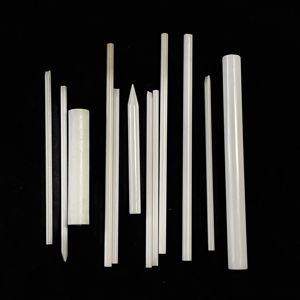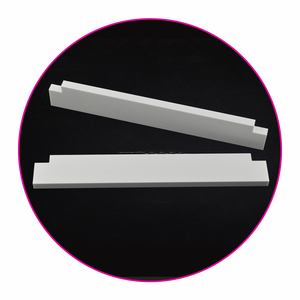Professional industry ceramic supplier, silicon nitride, silicon carbide, aluminum nitride and any other kinds of ceramics.
PRODUCT PARAMETERS
Description
Overview of Metallized Al2O3 Aluminum Oxide Substrate PCB Alumina Ceramic Sheet for Antenna Components
Metallized Al2O3 Aluminum Oxide Substrate PCB Alumina Ceramic Sheet for Antenna Components are one of the most widely used and versatile technical ceramics, prized for their excellent combination of properties. Composed primarily of aluminum oxide (Al₂O₃), they offer outstanding hardness, wear resistance, and electrical insulation, even at high temperatures. From low-purity grades for general industrial use to high-purity compositions for demanding applications, alumina ceramics provide a cost-effective and reliable solution across a vast range of industries.
Features of Metallized Al2O3 Aluminum Oxide Substrate PCB Alumina Ceramic Sheet for Antenna Components
-
High Hardness & Wear Resistance: Excellent resistance to abrasive wear, making it ideal for liners, nozzles, and guides.
-
Superior Electrical Insulation: Maintains high electrical resistivity and dielectric strength, even at elevated temperatures.
-
Excellent Thermal Stability: Withstands high operating temperatures and exhibits good thermal conductivity.
-
High Mechanical Strength: Possesses good compressive strength and stiffness.
-
Chemical Inertness: Resists corrosion from a wide range of acids, alkalis, and other harsh chemicals.
-
Cost-Effectiveness: A highly versatile and economically efficient ceramic material for numerous applications.
Specification of Metallized Al2O3 Aluminum Oxide Substrate PCB Alumina Ceramic Sheet for Antenna Components
This Metallized Al2O3 Light Weight Aluminum Oxide Substratum PCB is a ceramic sheet produced top antenna components. It uses light weight aluminum oxide ceramic. This material is extremely hard. It manages high warmth well. It stays secure under huge temperature level swings. This is crucial for antennas in difficult locations. The ceramic base is pure Al2O3. Typical purity degrees are 96% or 99%. Greater purity typically suggests far better efficiency. It sets you back more as well. The substratum thickness varies. You can discover sheets from 0.25 mm up to numerous millimeters thick. Thinner sheets suit smaller antenna styles. Thicker ones give more strength.
The surface is metallized. A metal layer bonds highly to the ceramic. This layer is normally copper. Occasionally it is aluminum or gold. The steel layer forms the circuit pattern. This pattern acts like the antenna itself. It brings the electrical signals. The steel layer can be thick or thin. Thicker steel takes care of greater currents better. It decreases signal loss. The metal bonds directly to the Al2O3. This bond is very solid. It won’t peel off conveniently. This ensures lengthy life for the antenna.
This ceramic PCB moves warmth away quick. Antenna components can fume. This heat needs to go somewhere. The Al2O3 pulls warm from hotspots. This keeps the antenna cooler. Cooler procedure indicates better dependability. The product additionally insulates power extremely well. It quits signals dripping where they should not. This keeps the antenna signal tidy. Signal stamina remains high. The ceramic has a smooth surface. This smoothness is essential. It assists produce specific antenna patterns. Sharp edges on the metal traces are feasible. This accuracy boosts antenna function.
This metallized Al2O3 substratum functions terrific for lots of antenna types. Spot antennas utilize it typically. So do microwave antennas. High-frequency antenna systems benefit from it. It fits well in base terminals. Satellite communication devices utilizes it. Radar systems locate it useful. The product takes care of high power levels. It executes sought after RF environments.
Applications of Metallized Al2O3 Aluminum Oxide Substrate PCB Alumina Ceramic Sheet for Antenna Components
Metallized Al2O3 aluminum oxide substrate PCBs are essential for modern-day antenna components. Individuals often call them alumina ceramic sheets. This product manages high-frequency signals truly well. That makes it excellent for antennas in things like 5G networks, radar systems, and satellites. The alumina base supplies excellent electrical insulation. It likewise uses low signal loss at high regularities. This is essential for antenna performance.
These ceramic sheets are extremely strong mechanically. They stand up to damage much better than typical PCB materials. They also handle warmth very well. Alumina spreads warm out effectively. This prevents hot spots in powerful antenna systems. Dependability improves due to this thermal administration. The ceramic will not warp or crack quickly under temperature level modifications.
Producers metallize the alumina surface. They apply slim layers of metals like copper or gold. This creates the conductive paths required for the circuit. The metal bonds strongly to the ceramic. This bond remains protected also in tough problems. It ensures secure electric links with time. You can make complex circuit patterns on these sheets.
These alumina PCBs support smaller antenna designs. They allow better signal control in portable spaces. Base terminal antennas use them for secure operation. Aerospace antennas count on their longevity. High-speed interaction gadgets take advantage of their low loss. They are a vital product for innovative RF applications.
Company Profile
Tanki New Materials Co.Ltd. focus on the research and development, production and sales of ceramic products, serving the electronics, ceramics, chemical and other industries. Since its establishment in 2015, the company has been committed to providing customers with the best products and services, and has become a leader in the industry through continuous technological innovation and strict quality management.
Our products includes but not limited to Aerogel, Aluminum Nitride, Aluminum Oxide, Boron Carbide, Boron Nitride, Ceramic Crucible, Ceramic Fiber, Quartz Product, Refractory Material, Silicon Carbide, Silicon Nitride, ect. please feel free to contact us.

Payment Methods
T/T, Western Union, Paypal, Credit Card etc.
Shipment Methods
By air, by sea, by express, as customers request.
5 FAQs of Metallized Al2O3 Aluminum Oxide Substrate PCB Alumina Ceramic Sheet for Antenna Components
What is a Metallized Al2O3 Aluminum Oxide Substrate PCB? It is a special ceramic sheet made mostly from aluminum oxide (Al2O3). We add a metal layer onto its surface. This metal layer is usually copper. We do this so we can create electrical circuits. People call it an Alumina Ceramic Sheet PCB.
Why use Metallized Alumina Ceramic for antenna parts? It handles high frequencies very well. This is crucial for antennas. Antennas often work at microwave frequencies. The material has low signal loss. This means signals stay strong. It also manages heat effectively. This keeps the antenna stable during use.
How do you make these Metallized Alumina PCBs? We start with a pure Al2O3 ceramic sheet. It is very smooth and flat. Then we bond a thin layer of metal onto it. Copper is the common choice. We use a process called direct bonding or thick film printing. This creates a strong connection. After that, we etch the metal layer. Etching forms the circuit pattern needed.
What benefits do these substrates offer over regular PCB materials? They are much better for high heat and high power. Regular PCB materials like FR4 cannot handle extreme heat well. Alumina ceramic does not warp or break easily under heat. It also insulates electricity better. This prevents unwanted signals. It lasts longer in tough conditions.
Can I solder components onto Metallized Alumina Ceramic? Yes, you can solder parts onto the metal layer. The metal surface is suitable for soldering. But you need the right solder and temperature. Be careful not to overheat the ceramic. It is strong but sudden temperature changes can stress it. Always follow good soldering practices. This ensures reliable connections.
REQUEST A QUOTE
RELATED PRODUCTS
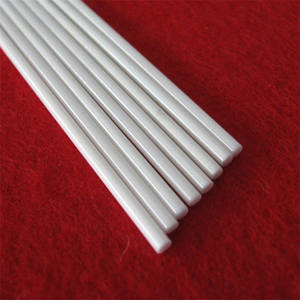
High Performance Alumina 92% 95% Ceramic Lining Tiles Aluminum Oxide Ceramic Wear Liner

95% Alumina Substrate Aluminum Oxide Al2O3 Ceramic Plate for LED Applications

Critical Raw Material for High-Performance Ceramics 4n High-Purity Aluminum Oxide
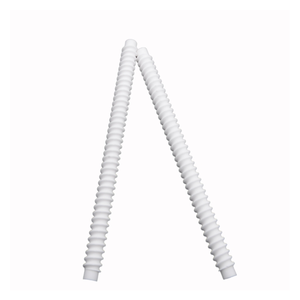
0.5-70mm High Purity Alumina Ceramic Beads Inert Ceramic Balls 4n 5 Al2O3 Aluminum Oxide Ball
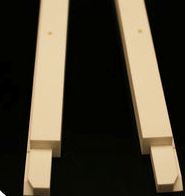
High Purity Aluminum Oxide Al2O3 Alumina Ceramic Plate / Alumina Wear Lining Tile
